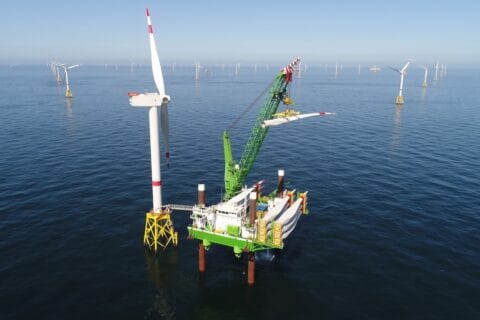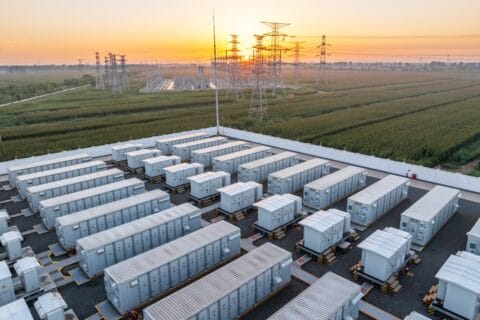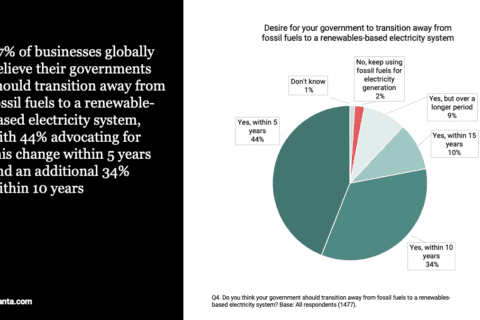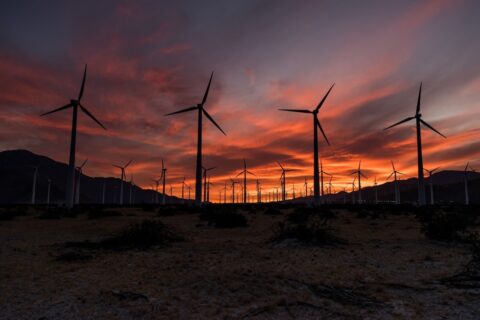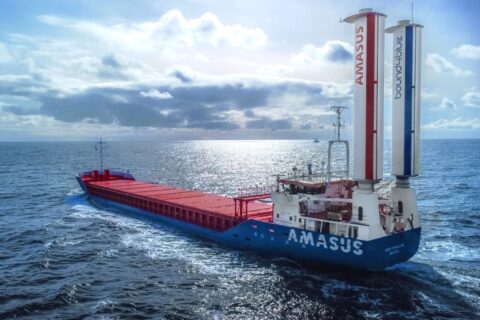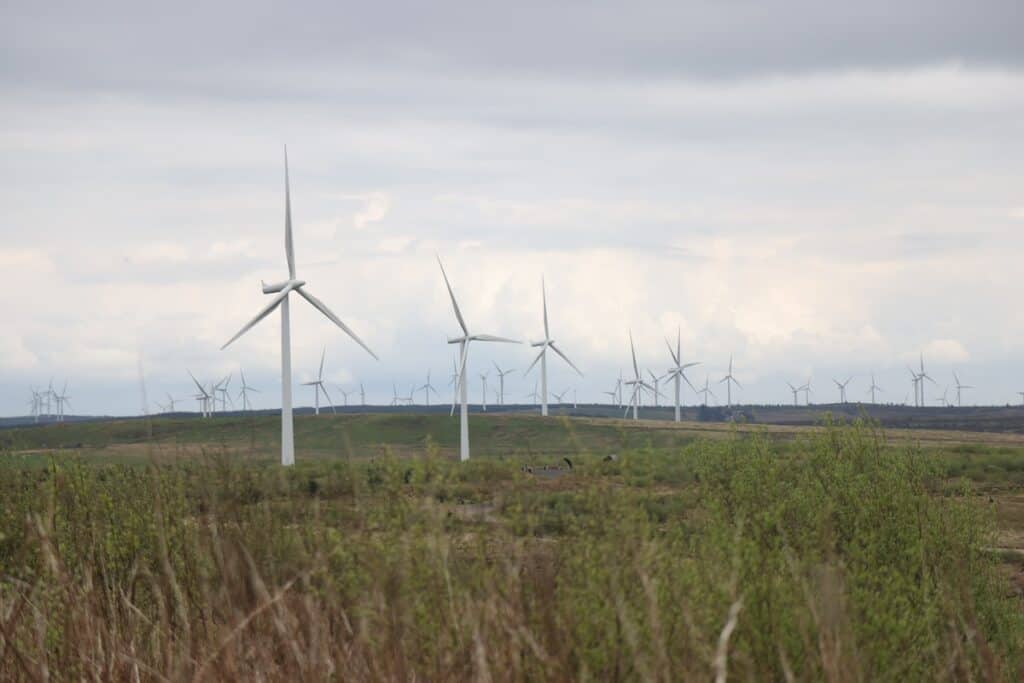
As technology matures, newer models often deliver better performance and efficiency — so, with some older wind turbines sat on the best sites onshore, is it time to repower and replace, reprocess and recycle?
Taking the UK market as a test case, analysis of existing turbine assets by sustainable materials specialist EMR illustrates how joined-up policy on circular economy matters makes climate targets more achievable.
The same circularity principles around performance and efficiency upgrades could apply not only to other countries, but maybe other technologies and assets, too, from battery storage, to buildings.
So how might such principles work in practice, and what needs to change?
New targets will be a big ask for planners
As of this July, the UK has a new government; and one of its first acts has been to overhaul the policy on onshore wind, removing the ban on new projects and introducing a target of 30GW by 2030.
This move firmly positions wind power technology as a cornerstone of government efforts to further decarbonise the UK energy mix. However, policy is one thing, delivery often another.
This target represents a doubling of the UK operational onshore wind fleet, from 15GW to 30GW. This means manufacturing, constructing, and grid-connecting around 4,000 turbines over the next six years.
This is not only a stiff task for renewables, but, more importantly, a big ask for planning.
New onshore wind projects need permission from their Local Planning Authority. The recent planning reform in England has moved to make this easier and brings policy in line with other parts of the UK.
However, getting consent is still by no means a given. In fact, UK Government data shows that 491MW of onshore wind was refused planning permission in the first quarter of 2024 alone.
Securing grid capacity is also a key constraint in enabling new onshore wind projects and in some parts of the UK, the backlog for new applications is over 10 years. Reforms are under way to speed up this process.
So how can the UK successfully, speedily and cost-effectively develop this vital new clean energy capacity?
Unlocking older more productive sites
Well, an obvious target to consider is repowering the UK’s oldest wind farms. Overall, some 0.57GW of onshore wind capacity is now over 20 years old, totalling over 850 turbines across nearly 70 sites.
Repowering projects do also need planning permission, but these oldest wind farms are typically located in areas that have the best wind conditions, and are now running small, inefficient, and aging assets.
The average size of onshore wind turbines built prior to the year 2000 in the UK was 0.5MW. Now, sizes of 4-6MW are common for new developments. Repowering the oldest sites with newer turbines can therefore generate much more power for the same (or in some case a smaller) physical footprint.
Repowering projects can typically increase the capacity of an onshore wind farm by 3-4 times, whilst reducing the overall number of turbines. The business case is also boosted by the rapid carbon payback of a new onshore wind farm, which is generally accepted to be less than one year of operation.
Whilst on paper all this seems like an attractive option for asset owners, there is currently no financial incentive for them to upgrade these prime locations to generate more clean power.
Double-whammy of unintended consequences
In terms of aging assets, analysis by EMR shows that 98% of onshore wind capacity in the UK that is over 20 years old is registered via the Renewables Obligation (RO) scheme.
This support mechanism was introduced in 2002, and mandates UK electricity suppliers to purchase ‘green certificates’ from renewables generators, giving operators of those wind farms an additional source of income to the wholesale price of their electricity generation.
In recent years, the combined income from these certificates, coupled with the huge rise in the wholesale price of electricity, has made it possible for generators to run wind farms for longer, despite their increasing maintenance costs. This has resulted in many assets being operated well beyond their original expected lifetime, which often involves extending the existing planning consent.
For early entrants into the RO, their participation in the scheme ends in April 2027, leading most developers to conclude it is not worth considering repowering opportunities before this date. Simply put, this financial mechanism is arguably blocking the most productive and suitable sites with ageing, small turbines.
Furthermore, when early entrants retire out of the RO, these older sites will likely come offline en masse, risking a supply-chain bottleneck in the nascent decommissioning industry, combined with a sudden rush to secure any changes to existing grid connections.
This double-whammy of unintended consequences would delay new and more efficient capacity coming online even further, ultimately to the detriment of the country’s climate and energy-security goals.
Incentives to boost efficiency and add capacity
One option presented by EMR suggests Minsters should consider plans to revise and extend the RO scheme for those operators running the oldest onshore wind assets. If a site is repowered, scheme membership could then persist beyond old capacity coming offline.
Once connected to the grid, total repowered capacity at the same site would be given a reduced award, at such a rate that would cover any shortfall an operator incurred from the original installation leaving the RO.
This provision would act to incentivise the maximum possible capacity additions within the shortest timeframe. A six-month extension beyond the original expected closure date of April 2027 would also allow operators sufficient time to remove and replace the old assets.
Call for decommissioning to rise up the agenda
Regardless of the specific mechanism for delivery, EMR calls for the recently founded Onshore Wind Industry Taskforce to put the issue of decommissioning older wind turbines high up on its priority list.
By 2030, 3.3GW of existing onshore wind capacity in the UK will be over 20 years old, so it is vital the country actively exploits the potential of its current crop of plants for repowering, in a bid to hit its 30GW target.
Having recently opened a wind turbine reprocessing centre in Glasgow, EMR is set to help the industry with its decommissioning goals. With nearly 90% of a wind turbine containing infinitely recyclable materials — such as steel, aluminium, and copper — these metals can readily re-enter the circular economy.
The circularity pioneer is also working with suppliers and customers to give components a second useful life via reuse and refurbishing, significantly reducing the embedded carbon of this green technology.
EMR is a global leader in sustainable materials with physical operations in the UK, USA, Germany, and the Netherlands. The group recycles around 10 million tonnes of metal and plastics each year — anything from a can to an aircraft carrier. This saves over 15 million tonnes of CO2 compared to virgin ore.
The business has also committed to becoming fully net zero by 2040, investing heavily in energy productivity, low-carbon and nature-positive technology, plus innovating new products to cut emissions.
Further Reading:
- More about EMR; and its new wind turbine reprocessing site in Glasgow;
- More on the potential for repowering to increase the capacity of an onshore wind farm by 3-4 times;
- More about the new UK government policy on onshore wind; and associated planning reforms;
- More on the recently founded Onshore Wind Industry Taskforce in the UK;
- Also on SustMeme, Record, but inequitable, growth in renewables;
- Also on SustMeme, Scotland green lights floating offshore wind farm;
- Also on SustMeme, Energy transition to add 40 million jobs by 2050;
- Also on SustMeme, Call to invest $35 trillion in transition tech by 2030;
- Also on SustMeme, First carbon-free recycling plant for steel;
- Also on SustMeme, First all-electric truck for Amsterdam metal recyclers (also from EMR);
- Also on SustMeme, How can we close the global Circularity Gap?
- Also on SustMeme, Is the global energy transition starting to stall?
Check out the full archive of stories on the SustMeme Circular Economy Channel, now available to Sponsor.

